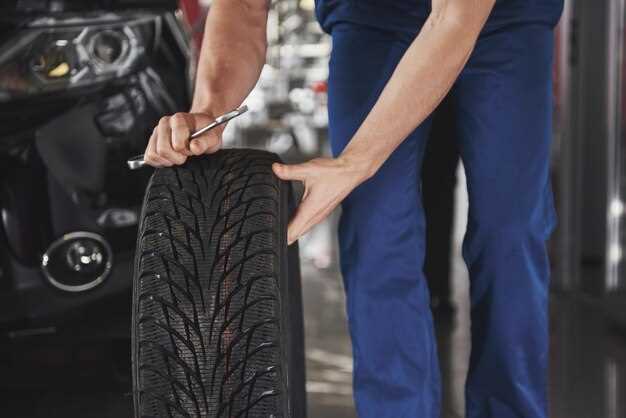
When it comes to track racing, the choice of tires can significantly affect overall performance, handling, and lap times. The right tires not only enhance grip but also ensure better stability and feedback during extreme driving conditions. In this article, we will explore the top track tires specifically designed to maximize grip performance on both dry and wet surfaces, allowing racers to push their vehicles to the limit.
Understanding the various types of track tires available is crucial for any serious racer. Performance tires differ in tread patterns, rubber compounds, and construction techniques, each tailored to specific racing conditions and vehicle types. Factors such as temperature, track surface, and driving style will influence tire selection, making it essential to choose wisely for optimal results.
In our detailed analysis, we will highlight several tire models revered by professional and amateur racers alike. We’ll examine attributes such as traction, durability, and response that contribute to superior grip performance. Whether you’re a seasoned competitive driver or a weekend enthusiast, selecting the right tire can be the game-changer that leads to victory on the track.
Choosing the Right Tire Compound for Optimal Traction

Selecting the appropriate tire compound is crucial for achieving maximum grip during racing or performance driving. Different compounds offer varying characteristics that can significantly affect traction, handling, and overall performance. Here are key factors to consider when choosing the right tire compound:
-
Temperature Range:
Different tire compounds perform optimally at specific temperature ranges. Softer compounds generally provide better grip in warmer conditions, while harder compounds might be more durable but offer less traction. Know the temperature range suitable for your tires and ensure they match the conditions.
-
Track Surface:
The type of track surface can influence compound choice. For example, smooth, asphalt surfaces may require softer compounds that conform to the surface for better grip, while rough surfaces may warrant harder compounds for durability and resistance to wear.
-
Driving Style:
Your driving style can impact the effectiveness of different tire compounds. Aggressive driving may benefit from softer compounds that provide better grip but might wear out faster, whereas a more conservative style could be complemented by harder compounds that offer longevity.
-
Weather Conditions:
Consider the weather conditions you will be racing in. Wet or damp conditions require different tire compounds specifically designed for traction in water, typically using a softer rubber and unique tread patterns to channel water away.
-
Type of Race:
The type of racing (sprint, endurance, etc.) can dictate the ideal tire compound. Sprint races prioritize maximum grip over shorter durations, while endurance races might prioritize a balance between grip and longevity.
-
Compound Specifications:
Review the tire manufacturer’s specifications, including durometer ratings and tread designs. Tires are often classified as soft, medium, or hard compounds, each offering distinct advantages. Soft tires provide superior grip but minimize durability, while hard tires are more robust but may lack maximum traction.
In conclusion, selecting the right tire compound involves balancing multiple factors including temperature, track surface, driving style, weather conditions, race type, and specific tire specifications. An informed choice can dramatically enhance performance and provide the competitive edge needed on the track.
Understanding Tire Tread Patterns for Different Track Conditions

Tire tread patterns play a crucial role in determining grip performance on various track conditions. Each tread design is optimized for specific environmental factors, such as surface type, moisture level, and debris presence. Understanding these patterns can greatly enhance a driver’s ability to maximize traction and control.
1. Slick Tires
Slick tires are characterized by a smooth surface devoid of grooves. They are ideal for dry tracks, offering maximum contact with the asphalt. This design increases surface area, allowing for superior grip under optimal conditions. However, slicks are not suitable for wet or uneven surfaces, as they lack the necessary channels to disperse water.
2. Grooved Tires
Grooved tires feature strategically placed channels that help manage water on wet tracks. The tread pattern allows for better water evacuation, reducing the risk of aquaplaning and maintaining traction on slippery surfaces. The depth and arrangement of grooves can vary, with some designs prioritizing wet performance while others balance both wet and dry capabilities.
3. All-Weather Tires
All-weather tires offer versatility for varying conditions. These tires typically combine a moderate tread depth with a pattern that accommodates both wet and dry performance. While they may not excel in either extreme, they provide a practical solution for drivers who face unpredictable weather or mixed track conditions.
4. Studded Tires
In icy or snowy conditions, studded tires are the go-to option. The embedded studs provide enhanced grip on slick surfaces by digging into the ice, preventing slippage. However, they are not recommended for dry or mixed conditions, as the studs can create excessive wear and reduce overall performance.
5. Tread Patterns for Specific Surfaces
Tread patterns can also be tailored to specific track surfaces such as asphalt, dirt, or gravel. For instance, tires designed for dirt tracks often feature wider gaps to promote better traction and self-cleaning. On the other hand, asphalt tires focus on smoother patterns to maximize contact area and minimize surface deformation.
Understanding the relationship between tire tread patterns and track conditions enables drivers to select the optimal tires for each scenario. By doing so, they can maximize grip performance, enhance safety, and ultimately improve lap times.
Impact of Tire Pressure on Grip and Handling Performance
Tire pressure plays a crucial role in the overall grip and handling performance of a vehicle, significantly influencing its stability and responsiveness. Maintaining the correct tire pressure ensures optimal contact between the tires and the road surface, which is vital for maximizing grip during high-speed cornering and braking.
Under-inflated tires can lead to increased rolling resistance and heat build-up, which diminishes grip. The tread is unable to maintain its intended shape, resulting in reduced surface contact and potentially compromising traction. Moreover, lower pressures can cause excessive tire flex, undermining handling precision. This effect is especially pronounced in race conditions, where controlled handling is essential for navigating tight turns efficiently.
Conversely, over-inflated tires can lead to a harsh ride and less surface area in contact with the ground. This condition reduces the tire’s ability to conform to the road surface, resulting in diminished grip, particularly on uneven terrain. Over-inflation can also increase tire wear and the risk of damage during aggressive driving or impacts with curbs and debris.
Maintaining the manufacturer-recommended tire pressure is essential for achieving a balanced performance. Regular checks and adjustments to tire pressure based on driving conditions, such as temperature fluctuations and load changes, can further enhance grip and handling. Utilizing a tire pressure monitoring system (TPMS) can assist drivers in maintaining optimal pressure, allowing for proactive management of tire conditions during events.
In competitive environments, some racers adjust tire pressure strategically to achieve desired handling characteristics. Lower pressure may be employed for wet conditions to enhance contact patch flexibility, while higher pressure may be favored in dry conditions for sharper response. These adjustments highlight the importance of understanding the relationship between tire pressure and vehicle dynamics, enabling drivers to tailor performance to their preferences and track conditions.

